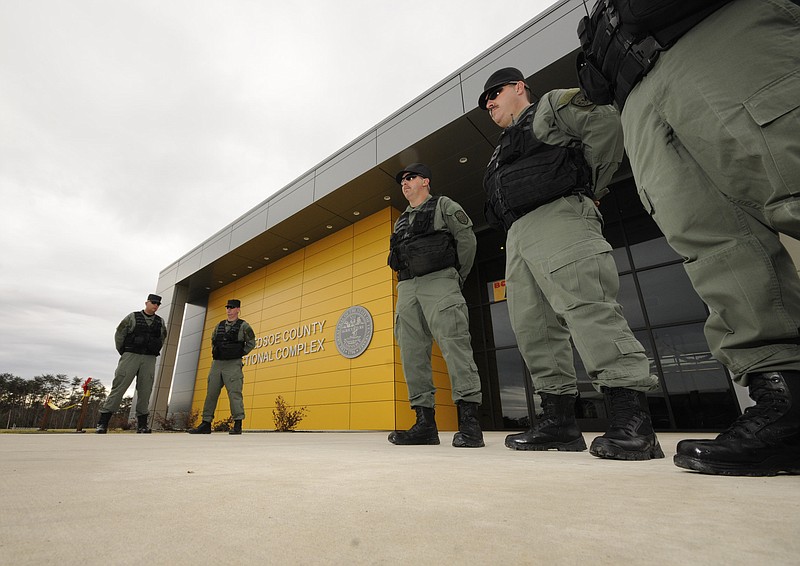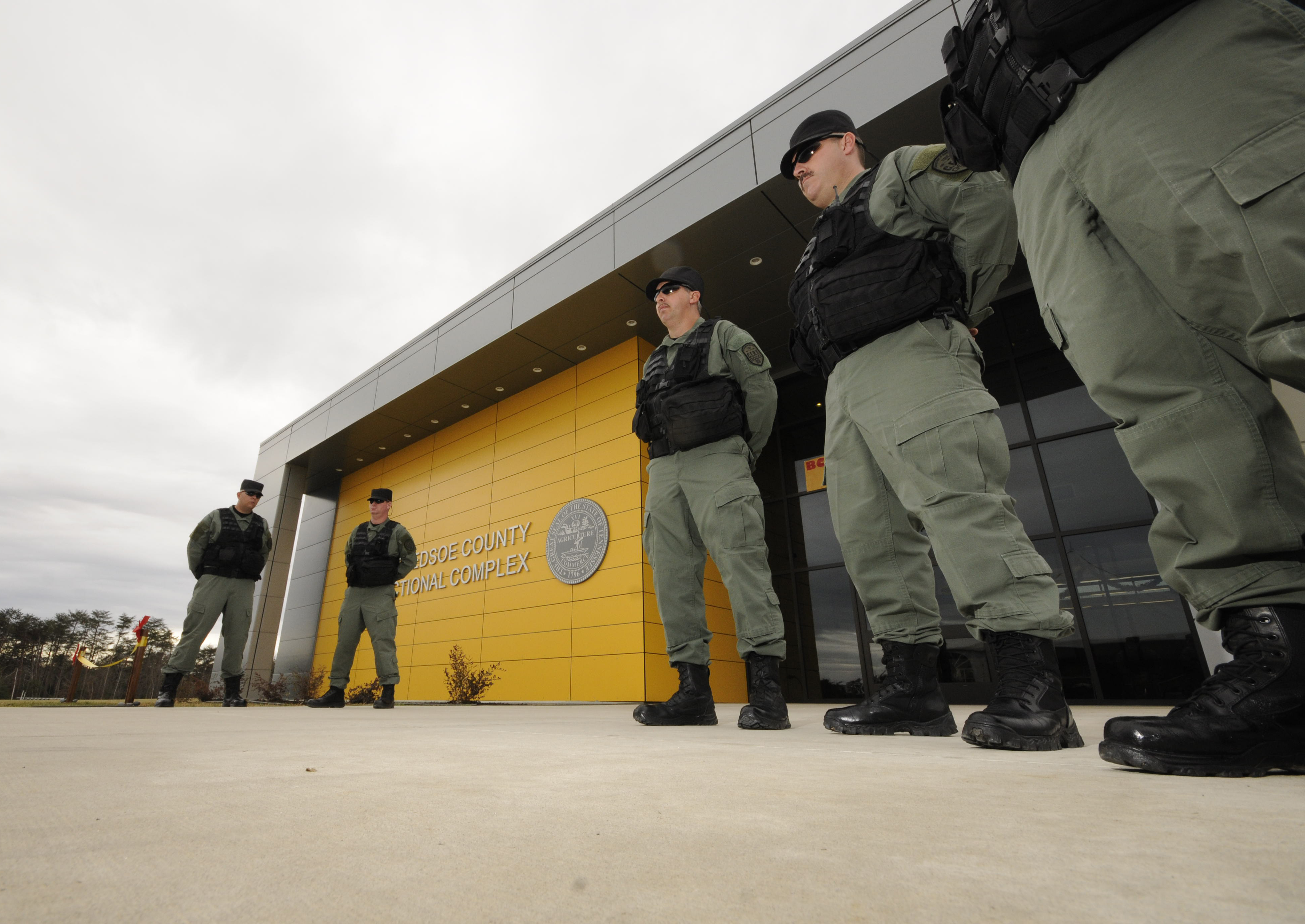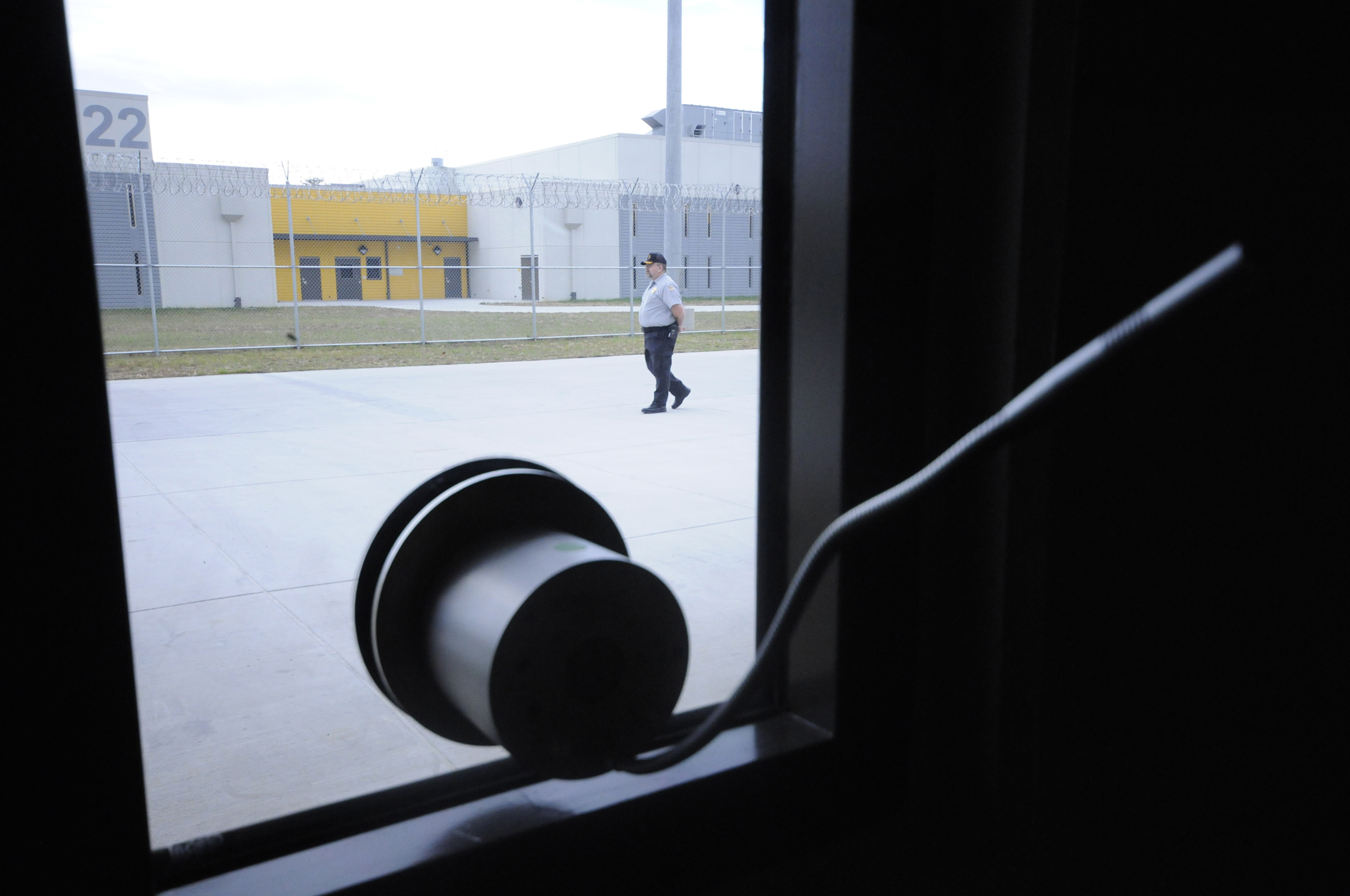BLEDSOE COUNTY CORRECTIONAL COMPLEX
$208 million: Total project cost$40 million: Annual operating budget425: Estimated new jobs430,000: Total square footage300: Minimum-security beds1,024: Medium-security beds192: Close-custody beds24: Maximum-security beds1,540: Total new prison capacity2,511: Total capacity of Bledsoe's new and existing prisonsSource: Tennessee Department of Correction
PIKEVILLE, Tenn. -- Bledsoe County's state inmate population will swell in January by more than 1,500 prisoners after Tuesday's opening of a $208 million prison that will bring 425 jobs to the area.
State and local officials on Tuesday toured the 430,000-plus square-foot Bledsoe County Correctional Complex that Warden Bruce Westbrooks called "the ultimate in innovative security for our century." Construction began in spring 2010.
"This new facility will allow us to further achieve our mission while supplying jobs to Pikeville and surrounding communities," Tennessee Department of Correction Commissioner Derrick Schofield told more than two dozen state and local officials on hand for tours and a ribbon-cutting ceremony.
Schofield said the new prison will serve as the new "diagnostic facility" for the state starting with the first inmates.
"All male offenders entering [the Tennessee] system will eventually come through this facility, where they will begin to get their programming, learn about their security risk and start the process for reentry back into society," he said.
The prison's mix of minimum-, medium- and maximum-security prisoners will come from all over the state and help lighten the burden on county jails that are now taking up the slack, Schofield said.
The new prison, combined with the 971 beds at the former Southeastern Tennessee State Regional Correctional Facility next door, boosts the prison population on Bledsoe's 2,200-acre chunk of the Cumberland Plateau to more than 2,500.
The facilities now are joined under the new name, the older prison becoming the "Annex."
Part of the new prison's workers will be transplanted employees from nearby Taft Youth Development Center, which was closed earlier this year. Others will come from Bledsoe, Cumberland, Van Buren and surrounding counties, according to officials.
Bledsoe County Mayor Bobby Collier praised state officials for choosing Bledsoe for the prison project and the 425 jobs the area needs, as well as the water and electrical power improvements for it that will mean better services for local residents.
The prison helps keep Bledsoe County people employed in their own community, Collier said.
"With a workforce that 52 percent-plus work outside our county boundary, it's important for us to get as many jobs here ... as we can," Collier said.
Deputy Gov. Claude Ramsey said he knew most people and officials would agree that $208 million could be better spent on roads, schools and other infrastructure, but that prison needs have to be answered, too.
He drew on some Hamilton County Jail history when leaders were discussing an addition there and its costs.
"One of the people in the discussion said, 'Building a prison is kind of like building a field of dreams; if you build it, they will come,'" Ramsey said.
"The need is there," he said, but "let's all keep in mind that our ultimate goal is not to have to build another prison."
The prison employs some of the latest design features, including a pair of tunnels that are the facility's only entrance and exit.
The tunnels, similar to those at the prison completed in Morgan County in 2009, pass under an uninterrupted perimeter fence and road that circles the prison's collection of 23 or so buildings. Along with five housing units, the prison has buildings for administration, security, visitation, infirmary, cafeteria and work programs.
One maximum-security unit houses 24 maximum-security and 192 close-security inmates, four of the 256-bed housing units are medium security, and minimum-security prisoners will be held in a separate 300-bed building, officials said.
The prison is designed to reduce utility costs by using 580 geothermal wells to circulate air underground, where temperatures stay 55 to 58 degrees, to provide heating and cooling, officials said.
Construction in such a remote location -- the prison site is 15 miles from Pikeville -- prompted contractors to build each of the 80-square-foot precast, concrete cells at a temporary facility about a half-mile from the construction project, then truck them to the site where they were stacked by a crane like giant Lego blocks.
Area lawmakers -- including state Rep. Cameron Sexton, R-Crossville, Sen. Charlotte Burks, D-Monterey, incoming Rep. Ron Travis, R-Dayton, and former Rep. Bill Harmon from Dunlap -- praised the quality of the project and the impact on employment.
"Our fondest hope is that everybody who comes through these doors will leave with a change in attitude and a change for the better to be a productive citizen in our communities," Ramsey said. "How successful we'll be will be dependent on the many men and women who will work here on a daily basis."
Contact staff writer Ben Benton at bbenton@timesfreepress.com or 423-757-6569. Subscribe to his Facebook posts at facebook.com/ben.benton1 and follow him at twitter.com/BenBenton on Twitter.


